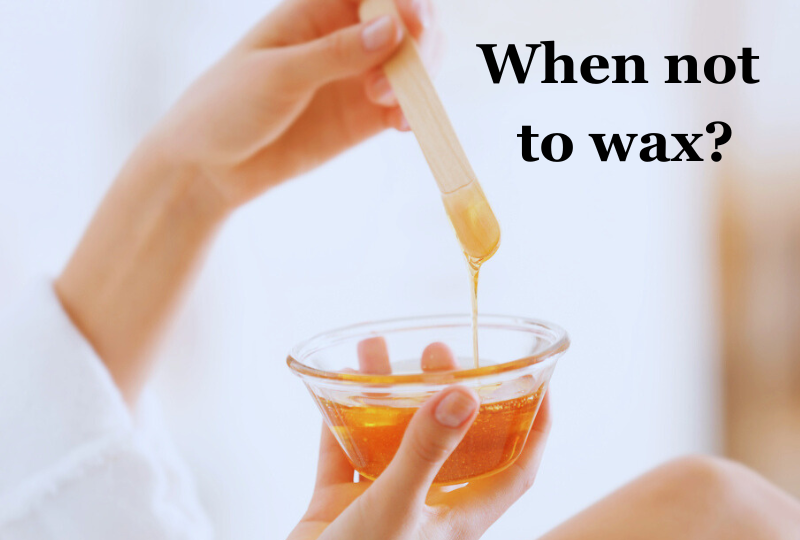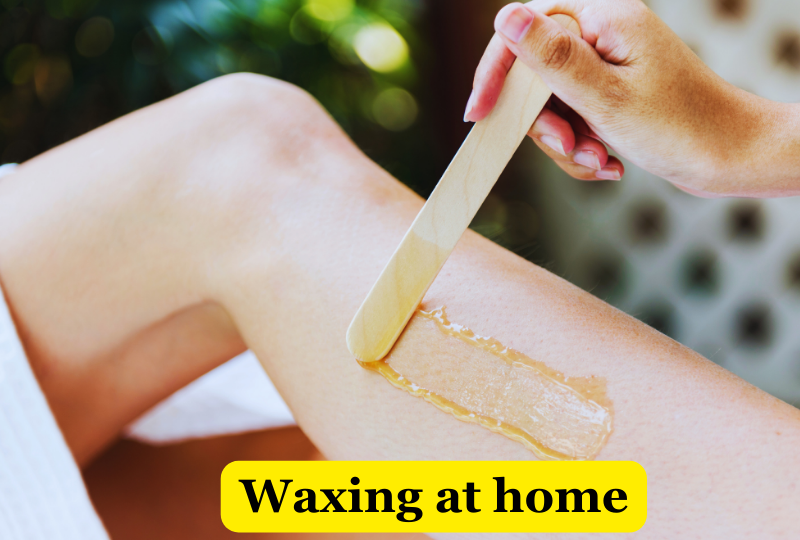I hope you don’t already have a stick of hot laundry in one hand and a phone in the other if you just looked up “how to do waxing at home.” Before tearing the skin, you need make a small amount of preparation to ensure its safety.
When it comes to waxing, especially Brazilian wax, dermatologists advise consulting a professional. However, you may safely produce any type of wax at home as long as you follow the required safety precautions and aftercare instructions. If you wish to immediately regulate the discomfort you’re feeling and/or feel uneasy when someone else touches certain portions of your body, it might also be more convenient for you.
You may read about the suggestions made by the professionals for softer, healthier skin and pain alleviation below (since no matter who grows, you’ll feel it). Here’s how to cultivate plants inside as quickly and painlessly as possible.
Compared to shaving, is waxing better?
In the end, the decision is yours. However, if you can endure the short-term discomfort, waxing at home might be beneficial for persons with thicker hair, even though it can be painful right now. Because waxing removes the complete hair strand, you won’t experience unpleasant side effects like razor bumps that can occur with other hair removal techniques.
How do I get my skin and hair ready for waxing?
Cut your hair before you start if it is long in the area you want to grow, but make sure to leave approximately a quarter inch of hair so the wax has something to cling to. After that, apply oil to the skin before using wax. The barrier serves to keep the wax away from the skin. High Priest Sugar Scrub, a physical scrub infused with soothing jojoba oil, is what we advise using.
What kinds of wax exist?
A. Sugar Wax
Since ancient times, sugar wax has been produced using only natural materials (sugar, lemon, and hot water).
It is perfect for repeated usage in the same area because it removes hair at the root without harming the skin. The finest wax for those with sensitive skin is sugar wax. Additionally, it is safe to apply to any area of the body.
B. Chocolate Wax
Both your mouth and your skin will benefit from chocolate. The ideal option if you’re searching for something opulent and delicious is chocolate wax.
Sugar wax is more painful than chocolate wax, but chocolate wax has antioxidant characteristics that are good for your skin. Among the additional ingredients are glycerin and almond oil. Wax is rather more expensive than other waxes.

C. Hot Wax
It is common practice to use heated wax in the body. The wax is heated in the microwave or melted in a skillet.
To eliminate body hair, hot wax is applied using wax strips and an applicator that resembles a flat rod. Very fine hair can be removed by the wax, which travels fast across the skin.
D. Cold Wax
Cold wax is used to cover the skin without heating or processing it first. It is simple to use while on the road and doesn’t create much clutter.
It can be purchased in the market as a package or wax strip. It has a hard, thick consistency and a semi-solid shape.
Best procedures for waxing at home without discomfort
1. Check the wax temperature
You can test whether the wax is too hot by dabbing a small patch on the outside of your wrist. It ought to be warm yet bearable.
2. In the direction that your hair grows, apply wax
After your skin has healed, always smooth the wax on, whether you used striated or unmarked wax. The strip should be applied in the same manner. To prevent bacteria from getting into the clothing, avoid soaking the applicator twice in the container.
3. Pull the wax, In the opposite direction
Observe the directions for your particular wax. While some waxes need time to solidify, others can be eliminated practically instantly. When you’re ready to pull, tightly grip your skin with one hand and nudge it in the direction of where the hair is growing. Then, quickly and swiftly remove the strip or wax in the other direction with your other hand.
4. Become pain-free when pulling
Draw in a deep inhale and pull out rapidly to reduce the bite. After that, apply your hand to the freshly epilated skin to calm it. Apply a lidocaine cream, such as Plum Smooth Plumb Numb, about 30 minutes before hair removal if you are sensitive to rising pain.

When not to wax?
Some folks simply aren’t the best prospects for development. In the event that any of the following situations apply to you, you must select a different approach:
You are expecting: That’s true, but hormones associated with pregnancy can also make you and your skin more sensitive.
You have wounds or ingrown hairs: They might cause sensitivity and make you more susceptible to infection.
When you get your period: During your period, your skin is frequently lot more sensitive.
You take specific medications: These include of hormones (like contraceptives), antibiotics, oral acne treatments, and topical retinoids (such differin and retina-A). All of these drugs have the potential to make the adverse effects of waxing worse, so consult your doctor before taking any.
How to avoid skin injuries?
Although waxing is done to get rid of undesirable hair, in most situations, doing so also gets rid of some dead skin cells from the skin’s surface. This may have a beneficial exfoliating effect. Wax, however, can occasionally remove a small layer of skin, leaving a wet or bleeding area behind.
When using a hard wax instead of a soft wax, skin lesions are less likely to occur. Only the hair is adhered to by hard wax; the skin is not. The gentle wax sticks to both skin and hair, making it perfect for eliminating frizzy hair.
Make sure your skin isn’t scarred, inflamed from excessive exfoliation, or too thin for waxing regardless of the type of wax you choose.
Never use wax on skin that is already hurting, cut, scratched, itchy, brown, red, irritated, inflamed, irritated, or irritated. Nothing should be added to an existing one.
If you have recently had microdermabrasion, laser skin resurfacing, or other cosmetic procedures that severely exfoliate the skin, avoid growing facial hair. When it is safe to begin waxing, ask your dermatologist or esthetician.
Conclusion
Waxing at home is normally safe as long as you adhere to these guidelines, despite the fact that these development issues may appear a little scary. Additionally, there are many of goods on the market that might make it simpler for you. Going to a salon for your initial hair removal may be beneficial if you’re new to the hair removal process.
Pick a location on your body that you can readily see and reach with both hands for your first DIY wax. Don’t worry if you decide waxing isn’t for you. For hair removal, you have more possibilities. Alternately, you may hold it still and show it. Your decision is yours.
FAQs
How frequently should you wax?
Your hair’s preferences and rate of growth will determine this. On average, this occurs once or twice per month.
Which kind of wax is superior?
Your selections will determine this. Sugar wax is for you if you’re seeking for something wholly natural. Fruit wax or chocolate wax are wonderful options if you’re searching for something that may soften your skin and is also incredibly luxurious.
Which is preferable for waxing—at home or at a salon?
The choice to produce food at home is a question of taste. While going to the salon is typically safer, growing at home is less expensive and takes less time and effort.
Which is preferable, waxing or shaving?
While shaving is less expensive than waxing, it does not last as long. Waxing often last for 3 to 4 weeks, since the hairs are removed from the root. Shaving, however, guarantees that the hair will come back in 3–7 days.
Before or after your shower, do you wax?
Avoid washing shortly before waxing, but this may vary on your particular choice, since this may not allow your skin enough time to dry up and make the process more difficult.
Is waxing at home more painful?
This depends on your pain tolerance and waxing experience. While some individuals feel better at home, others might rather visit a salon.
Resource Health

Pingback: benefits of apple cider vinegar - Health Care